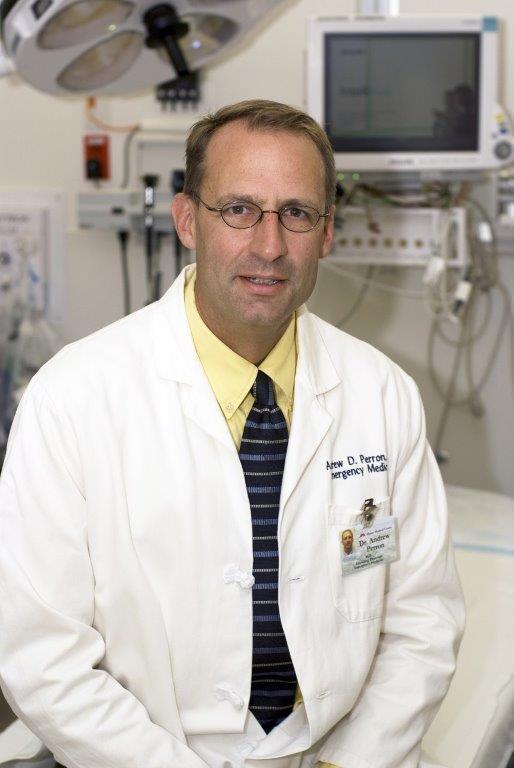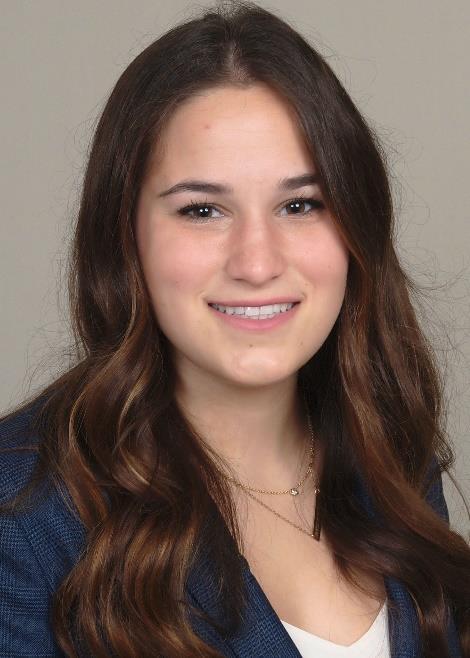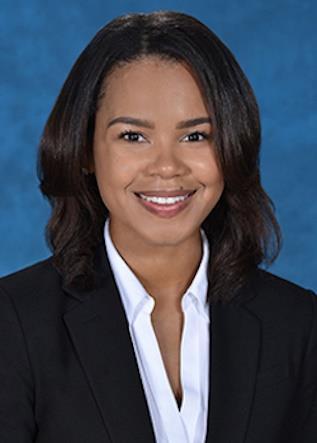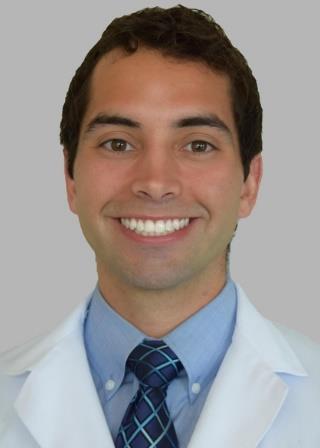
MedicalCenter
ofEmergencyMedicine
22,2023
Academic Day
Carolinas
Department
June
Resident
Resident Academic Day 2023
CMCDepartmentofEmergencyMedicine

Thursday, June 22, 2023
Medical Education Building • 3rd Floor Conference Room
Schedule
8:00 am Welcome & Introductions Mike Gibbs, MD and Mike Runyon, MD
8:10 am 2023 Resident Academic Day Address Andrew D. Perron, MD, FACEP
8:30 am Kaley El-Arab, MD – Incidence, Outcomes, and Risk Factors of Post-Intubation Hypotension in Adult Trauma Patients
8:45 am Lucas Goss, MD – Precordial Swirl Sign: A new ECG pattern of LAD OMI
9:00 am Anthony James, MD – Sexually Transmitted Infection Testing Differences Between Community and Academic Emergency Department Settings
9:15 am Breeanna Lorenzen, MD – Teen Trauma Outcomes in the Adult verses Pediatric Emergency Department at Carolinas Medical Center Break @ 9:30 am
9:45 am Quinton Nannet, MD – GO-PAP® versus Flow-Safe®: Which is Better?
10:00 am Dominic Nicacio, MD – Active Normothermic Targeted Temperature Management Following Cardiac Arrest Is Associated With High Fever Rate
10:15 am Robert Nicholson, MD – Terminal QRS Distortion as a Variable to Identify Occlusion Myocardial Infarction
10:30 am Courtney Owens, MD – Current Practices of Administration of Analgesia in Pediatric Patients with Long Bone Fractures in the Emergency Department
10:45 am Morgan Penzler, MD – Staged urine collection from triage in young children with suspicion of UTI
Break @ 11:00 am
11:15 am Eric Sabatini-Regueira, MD – Financial literacy amongst emergency physicians and emergency medicine trainees in an academic center
11:30 am
Elzada Sercus, MD – Outcome and Process Characteristics of nerve blocks using ultrasound guidance for regional anesthesia performed by EM physicians at a quaternary, regional ED
11:45 am Ariana Trautmann, MD – Advanced interventions, outcomes, and complications in an intermediate- and high-risk pulmonary embolism registry
12:00 pm Sean Trostel, MD – Feasibility of Endoscopic Exchange of i-gel® Supraglottic Airways Placed in the Field for Cardiac Arrest
12:15 pm Marie Wofford, MD – Skin Color and Gender of High-Fidelity Simulation Manikins in Emergency Medicine Residency Training and their use in Cultural Humility Training
CMCDepartmentofEmergencyMedicine 2 Resident Academic Day 2023
Resident Academic Day 2023
CMCDepartmentofEmergencyMedicine

Visiting Professor
Andrew D. Perron, MD, FACEP Associate Dean for Graduate Medical Education and DIO Professor of Emergency Medicine, with a CAQ in Sports Medicine
Dr. Perron attended Dartmouth Medical School. He then trained in Emergency Medicine and did a fellowship in Sports Medicine, both at Carolinas Medical Center in Charlotte, NC. He served as a program director in Emergency Medicine for 18 years and was the Associate DIO and Vice Chair for Education at Maine Medical Center prior to his current position as Associate Dean for Graduate Medical Education at Dartmouth. He has published more than 200 articles, reviews, and book chapters. He speaks regionally, nationally, and internationally on the topics of neuro-trauma and orthopedic emergencies. He was the ACEP “speaker of the year” in 2007 and has been recognized for his teaching nationally with the C.O.R.D. Distinguished Educator Award.

CMCDepartmentofEmergencyMedicine 3 Resident Academic Day 2023
Incidence, Outcomes, and Risk Factors of Post-Intubation Hypotension in Adult Trauma Patients
Kaley K. El-Arab, MD, Huaping Wang, PhD, Alan C. Heffner, MD, Michael Gibbs, MD, Kyle W. Cunningham, MD MPH
Introduction: Cardiovascular deterioration is a recognized complication of emergency intubation. Post-intubation hypotension (PIH) has not been investigated in acute trauma resuscitation. We aim to identify the incidence, risk factors, and outcomes associated with PIH in acute resuscitations of injured patients.

Methods: We conducted a retrospective health records review of consecutive patients presenting with traumatic mechanisms requiring emergency airway management from January 2020 to October 2021. Data were extracted via the trauma database and manual chart review using a standard data collection instrument and a single reviewer. Enrolled patients were 18 years or older, involved in trauma, and intubated in the Emergency Department. Patients with hypotension defined by systolic blood pressure (SBP) < 90 mmHg, use of vasopressors, or cardiac arrest prior to intubation or within 30 minutes of intubation were excluded. PIH was defined as SBP < 90 mmHg within 30 minutes of intubation. Patients with PIH were compared to those who did not experience PIH.
Results: We identified 540 patients in our trauma database; 294 patients met criteria for the study. The median patient age was 38 years old and 77.6% of patients were male. PIH occurred in 36 of 294 (12.2%) patients.
Patients experiencing PIH did not have statistically higher mortality; 22.2% versus 16% (difference of 6.2%; 95% CI -0.19-0.07; p=0.34), but the median total hospital length of stay was 2.5 days longer for patients with PIH (8.5 IQR(3.5-23) versus 6 IQR(2-14); p=0.04). PIH patients had higher pre-intubation shock index (0.8 versus 0.7 p=<0.01), were less likely to be intubated on first attempt (77.1% versus 94.9%; p=<0.01), and were more likely to be female (56% versus 18%; p <0.01).
Discussion: PIH is a common complication of emergency intubation in trauma patients and is associated with higher complexity of illness as identified by hospital length of stay. We identified several clinical risk factors associated with PIH in trauma patients.
CMCDepartmentofEmergencyMedicine 4 Resident Academic Day 2023
Precordial Swirl Sign: A new ECG pattern of LAD OMI
Lucas Goss, MD, H. Pendell Meyers, MD, Brandon Friedman, MD, Alexander Bracey, MD, Daniel Lee, MD, Andrew Lichtenheld, MD, Wei J. Li, MD, Daniel D. Singer, MD, Jesse A. Kane, MD, Kenneth W. Dodd, MD, Kristen E. Meyers, MENG, Henry C. Thode, PHD, Gautam R. Shroff, MD, MBBS, FACC, Adam J. Singer, MD, and Stephen W. Smith, MD

Objectives: We sought to describe and evaluate a new ECG pattern of subtle left anterior descending (LAD) occlusion called “precordial swirl.” In this pattern the ECG manifests abnormal ST elevation (STE) and/or hyperacute T waves in V1-V2, with reciprocal STD and/or TWI in V5-V6, creating a clockwise “swirl” pattern in the ST-T shifts of the precordial leads (V1-V6).
Methods: After deriving the description and characteristics of the precordial swirl pattern from 15 patients with proven acute LAD occlusion correlating with the pattern, the pattern was evaluated using a high-risk population of ED patients with possible ACS symptoms. Amplitude and morphology of the ST segment, QRS complex and T wave were measured. We hypothesized that our derived criteria for precordial swirl pattern would have clinically significant specificity (greater than 90%) for OMI due to LAD occlusion.
Results: Several criteria were derived based on observations and measurements of the derivation cohort. The validation cohort consisted of 808 patients, of whom 265 had OMI. Precordial swirl defined as normal QRS (narrow QRS without LVH) with STD in V5 and/or V6 plus STE in V1 and/or V2 yielded a sensitivity and specificity of 11% (95% CI 8-15%) and 93% (95% CI 90-95%) for OMI. Positive and negative likelihood ratios were 1.54 (95% CI 0.98-2.41) and 0.96 (95% CI 0.91-1.00) Furthermore, this pattern correctly identified 13% of all STEMI (-) OMI in the validation cohort. Other derived criteria had similarly high specificity. T/QRS and STE/QRS ratios in V1 and V2 were significantly higher in subjects found to have OMI suggesting a relationship between the ratio of the amplitude of T wave and ST segment in acute coronary occlusion.
Conclusions: Among high-risk ACS patients in the ED, various definitions of the proposed “precordial swirl” sign had high specificity for LAD OMI, including a significant number of patients who are missed by the current STEMI criteria. Further study should be done to validate these findings and improve detection of acute coronary occlusion myocardial infarction.
CMCDepartmentofEmergencyMedicine 5 Resident Academic Day 2023
Sexually Transmitted Infection Testing Differences Between Community and Academic Emergency Department Settings
Anthony James, MD; Jeremy Thomas, MSW; Thomas Ludden, PhD
Background: Sexually transmitted infections (STIs) remain a common reason for presentation to the emergency department (ED). Isolated STI testing fails to address the concurrent risk factors that gonorrhea, chlamydia, syphilis, and HIV share. Patients undergoing STI testing can present to various ED configurations including academic sites or community sites. The study objective was to examine differences in STI testing between an academic ED and an associated community ED.
Methods: Gonorrhea and chlamydia, syphilis, and HIV testing rates were calculated for both an academic and a community ED for the years 2019‐2022. Rates of comprehensive testing (testing for all four STIs during a single encounter) were also compared to rates of isolated STI testing between the two EDs.

Results: The academic ED averaged 6.45 comprehensive tests per 1,000 patients (95% CI 6.07‐ 6.88) whereas the community site averaged 1.39 per 1,000 patients (95% CI 1.13‐1.65). Isolated testing for gonorrhea and chlamydia at the community ED was 67.6 per 1,000 patients (95% CI 65.8‐69.4) vs 39.68 per 1,000 patients (95% CI 38.7‐40.7) at the academic site. Co‐Testing for syphilis and HIV was over 70.0% (95% CI 68.0‐72.0) at the academic ED vs 51.9% (95% CI 45.6‐ 58.2) at the community ED. Men were less likely to receive isolated testing at the academic ED, 60.5% (95% CI 58.0‐63.0) compared to the community ED with 94.3% (95 CI 93.1‐95.5).
Conclusion: Comprehensive testing rates at both sites were lower than isolated testing for gonorrhea and chlamydia indicating an opportunity for interventions to increase HIV screening within both ED settings.
CMCDepartmentofEmergencyMedicine 6 Resident Academic Day 2023
Teen Trauma Outcomes in the Adult verses Pediatric Emergency Department at Carolinas Medical Center
Breeanna Lorenzen, MD; Samuel Ross, MD; Christyn Magill, MD
Objective: To compare “Teen Trauma” outcomes, outcomes from adolescents ages 1518 presenting with trauma, in the Adult verses Pediatric Emergency Department at Carolinas Medical Center.

Introduction: There is still debate if adolescents who present with trauma are better served in Adult Trauma Centers (ATCs) or Pediatric Trauma Centers (PTCs). The evidence continues to present conflicting results. Most studies compare separate ATCs vs PTCs but exclude data from combined trauma centers. Carolinas Medical Center is unique because it is a combined trauma center. Additionally, from January 2021-January 2022, adolescents ages 15-18 presenting with trauma were seen on the adult side of the emergency department. However, from February 2022-February 2023, this age group was treated on the pediatric side, providing a rare opportunity to be able to compare outcomes.
Methods: This study was a retrospective observational analysis of injured adolescents ages 15-18 presenting to the Carolinas Medical Center Emergency Department as a Trauma Code 1 or Trauma Code 2. Transfers, Trauma Alerts, those that dead on arrival and those with incomplete charts were excluded. The data was stratified by year, January 2021-January 2022 (when teen traumas were seen on the adult side) and February 2022February 2023 (when teen traumas were seen on the pediatric side.) Data was also stratified by Trauma Code 1 verses Trauma Code 2. Primary outcomes were emergency department (ED) and in-patient (IP) mortality. Secondary outcomes included ED length of stay (LOS), total ventilator days, total ICU days, and process outcomes including whether patients were intubated in the ED, had central accesses placed in the ED, had a chest tube placed in the ED, had a massive transfusion protocol initiated in the ED, if they had a FAST exam performed, or if pain medications were given. Additionally, the number of both CT scans and X-rays ordered in the ED were analyzed.
Results: A total of 157 adolescents ages 15-18 were included (73 from January 2021January 2022 and 84 from February 2022-February 2023.) There was a significant difference in overall ED mortality (2/73 January 2021-January 2022 and 0/84 February 2022-February 2023) vs inpatient mortality (4/73 January 2021-January 2022 and 5/84 February 2022-February 2023), p=.003. However, there were no significant difference in overall mortality between January 2021-January 2022 (6/73) and February 2022-February 2023 (5/84), p=.58. There was also no significant difference in ED length of stay (172 average minutes (IQR 71-258) vs 195.5 minutes (IQR 112-268), p=.72), total ventilator days for Trauma Code 1 (2 average days (1-3 days) vs 2 average days (1.5-3 days), p=.36) or total ICU days (Trauma Code 1 average days 2.5 (2-4 days), p=.35 and Trauma Code 2 average days 2.5 (2-4 days), p=.88.) The only process outcome that showed a significant difference between the time frames, was the total number of X-rays ordered during Trauma Code 2s (average 2 (1-3) vs 3 (1-5)), p= .01.
Conclusions: The only significant differences were in ED vs inpatient mortality and in the total number of X-rays ordered during Trauma Code 2s. Otherwise, there were no significant differences in primary or secondary outcomes when adolescents ages 15-18 with trauma were treated in the Adult verses Pediatric Emergency Department at Carolinas Medical Center.
CMCDepartmentofEmergencyMedicine 7 Resident Academic Day 2023
GO-PAP® versus Flow-Safe®: Which is Better?
Quinton Nannet MD Carolinas Medical Center, Joseph Blackwell MD Carolinas Medical Center and Mecklenburg EMS Agency, Melanie Hogg Carolinas Medical Center, Jonathan Studnek Mecklenburg EMS Agency, Douglas Swanson MD Carolinas Medical Center and Mecklenburg EMS Agency.
Objectives: It is estimated that between 3%-9% of Emergency Department visits and 7%-12% of hospital admissions are due to patients presenting with a primary respiratory complaint (Kelly, Langlo). Prehospital CPAP administration has been shown to reduce endotracheal intubations and reduce absolute mortality by as much as 18%-30% and 7%-21% respectively (Thompson, Winck). This retrospective cohort review compares need for endotracheal intubation (NETI), in-hospital mortality, hospital admission rates, and prehospital provider assessment of improvement between two popular pre-hospital CPAP devices administered to patients in respiratory distress.
Methods: Chart review was performed on patients that required pre-hospital CPAP for undifferentiated respiratory distress. Two independent 6-month periods of data were extracted, including 323 patient encounters in which FLOW-SAFE® was implemented and 348 patient encounters which GO-PAP® was utilized. Any patients over the age of 18 that received CPAP were included. The only exclusion criteria were patients under the age of 18. Prehospital providers assessed initial and final respiratory rate (RR) and pulse oximetry (SPO2) as well as a clinical assessment of respiratory status after intervention. Clinical outcomes of ED disposition, Intubation, and In-hospital mortality rates were collected via chart review amongst patients transported to our health care system.
Results: 670 total patient encounters were measured with 323 receiving FLOWSAFE® and 347 receiving GO-PAP® with no statistically significant differences in sample demographics of age, sex, and racial identity. EMS interpretation of clinical improvement in respiratory status showed no statistical significance 77.7% vs 73.5% (p = 0.125). Amongst the 670 total patients, 547 (81.6%) of them were transported to facilities where we had access to chart review. Of this subgroup, there was no statistically significant difference between FLOW-SAFE® and GO-PAP® in clinical outcomes of ED admission 89.8% vs 92.4% (p = 0.437), NETI 19.9% vs 14.3% (p = 0.121) or in-hospital mortality 10.2% vs 8.9% (p = 0.651).
Conclusion: Amongst this retrospective cohort, which is the largest head-to-head prehospital CPAP Device comparison study to date there was no statistically significant difference between FLOW-SAFE® or GO-PAP® in clinical outcomes of ED Admission, NETI, in-hospital mortality rates or EMS provider perceived clinical improvement.

CMCDepartmentofEmergencyMedicine 8 Resident Academic Day 2023
Active Normothermic Targeted Temperature Management Following Cardiac Arrest Is Associated With High Fever Rate
Dominic Nicacio, MD1 , Alan Heffner, MD1,2 , Tsai-Wei Wang, MS3 , Kathi Kraft, RN3 , Leslie London, RN4 , David Pearson MD, MS, MBA 1
1 Department of Emergency Medicine, Atrium Health’s Carolinas Medical Center

2 Department of Internal Medicine, Pulmonary & Critical Care Consultants, Atrium Health’s Carolinas Medical Center
3 Informatics & Analytics Services (IAS), Atrium Health
4 Emergency Medicine, Atrium Health
Background: Recent evidence supports active normothermic targeted temperature management (TTM) in patients after out-of-hospital cardiac arrest (OHCA). In July 2021, our institution transitioned to TTM targeting 37◦C. Our objective was to evaluate the impact of this practice change on temperature control and patient outcome.
Methods: This retrospective cohort study evaluated patients prospectively enrolled in an institutional registry and clinical pathway of consecutive patients admitted to the ICU following out of hospital cardiac arrest (OHCA) from July 1, 2014 to November 30, 2022. We compared a period of hypothermic TTM targeting 33◦C to 36◦C to a post-intervention period of normothermic TTM targeting 37◦C. The primary outcome was good neurological outcome at hospital discharge, with a secondary outcome of temperature control and avoidance of fever (≥ 38.0◦C) in the normothermia cohort.
Results: Of 1672 OHCA patients during the study period, 1610 (96%) had complete data and were included in the analysis. Mean age was 57 years and 1052 (63%) were male. Among all patients, witnessed arrest occurred in 1236 (77%), 730 (45%) had an initial shockable rhythm, and 553 (34%) had a good neurologic outcome. There was no difference in good neurological outcome between the hypothermia cohort (487/1426, 34.2%) and normothermia cohort (66/184, 35.9%) (absolute difference 1.7%, P=0.59). Among patients with witnessed OHCA and initial shockable rhythm, there was also no difference in good neurologic outcome between the cohorts (22.4% vs 20.6%; absolute difference 1.8%, P=0.38). After TTM target change, fewer patients received active TTM with a device (99.9% vs 58.2%, P<0.0001) and more patients experienced fever (0% vs 33.2%, P<0.0001) with a median duration of 180 minutes (IQR: 90 – 435 minutes).
Conclusion: After transition to 37◦C TTM target, OHCA patients experienced a significant increase in rate of fever. There was no difference in neurologic outcome between the hypothermia and normothermia cohorts. The precision and use of cooling devices may be important considerations for temperature control when choosing a target temperature.
CMCDepartmentofEmergencyMedicine 9 Resident Academic Day 2023
Terminal QRS Distortion as a Variable to Identify Occlusion Myocardial Infarction
Robert Nicholson, MD, H. Pendell Meyers, MD, Alexander Bracey, MD, Daniel Lee, MD, Andrew Lichtenheld, MD, Wei J. Li, MD, Daniel D. Singer, MD, Jesse A. Kane, MD, Kenneth W. Dodd, MD, Kristen E. Meyers, MENG, Henry C. Thode, PHD, Gautam R. Shroff, MD, MBBS, FACC, Adam J. Singer, MD, and Stephen W. Smith, MD

Background: ST-segment elevation (STE) has been utilized as the primary surrogate finding of acute coronary occlusion on electrocardiogram (ECG), creating the “STEMI vs. NSTEMI” paradigm. Yet, 25-30% of NSTEMI patients have occlusion myocardial infarction (OMI) found on delayed angiogram and have increased mortality compared to the NSTEMI patients without OMI. It has been proposed that a more nuanced understanding of ECG interpretation rather than screening with STEMI criteria alone may improve diagnosis of OMI. One such feature is terminal QRS distortion (TQRSD). This is the first study evaluating the diagnostic accuracy of TQRSD for the diagnosis of OMI.
Methods: Secondary analysis of the retrospective case-control study from the Diagnosis of Occlusion MI and Reperfusion by Interpretation of the Electrocardiogram in Acute Thrombotic Occlusion Database (DOMI ARIGATO) database. Chart review was performed by Emergency Medicine physicians and data collected included demographics, clinical and laboratory results, ECGs, and angiographic findings using the web-based Research and Electronic Data Capture (REDCap). ECG interpretation was performed blinded to all patient information except age and sex. The diagnosis of OMI was adjudicated by structured chart review. Diagnostic accuracy of any lead (except aVR) with TQRSD for the outcome of OMI was reported. McNemar’s test of paired proportions was used for comparison of sensitivity and specificity between TQRSD and STEMI criteria.
Results: Among 808 ED patients presenting with ACS symptoms, 265 (33%) met the outcome definition of OMI. One hundred eighty-six (23%) were identified as having at least one lead with TQRSD. TQRSD had a sensitivity of 53% (95% CI 47-59%) and specificity of 92% (95% CI 89-94%) for the diagnosis of OMI. Using McNemar’s test for paired proportions to compare TQRSD and STEMI criteria, specificity was statistically similar (92% vs. 94%, p=0.081), but sensitivity was significantly greater for TQRSD (54% vs. 41%, p<0.001).
Conclusions: TQRSD had greater sensitivity than STEMI criteria for diagnosis of OMI and maintained high specificity. TQRSD may help identify OMI patients who do not meet traditional STEMI criteria.
CMCDepartmentofEmergencyMedicine 10 Resident Academic Day 2023
Current Practices of Administration of Analgesia in Pediatric Patients with Long Bone Fractures in the Emergency Department
Juliana Jaramillo, MD, Courtney Owens, MD, John Manning, MD, Michael Runyon, MD, Emily MacNeill, MD
Objective: This study evaluates the current practices of analgesia for long bone fractures in pediatric patients between various Emergency Departments (ED’s) identifying differences in receipt of and time to analgesia administration for different racial/ethnic groups
Methods: This is a retrospective, observational study of children evaluated throughout a healthcare system among hospital types (urban, free-standing, rural/suburban, pediatric tertiary care (PED)) from June 1, 2018, through June 30, 2019. Inclusion criteria included patients age < 18 years with an ICD-10 code for long-bone or clavicular fracture. Information obtained from EMR included age, insurance, race/ethnicity, pain scores, diagnosis, and analgesia administration.

Results: 2,300 patients met inclusion criteria; data from 1,576 patients was analyzed across the four hospital types. 1,014 patients across sites indicated a pain score in the range of 6-10; of this sub-group, 82.4% (95%CI: 79.8-84.6) of patients received analgesia and 45.8% (95%CI: 42.6-48.8) received an opioid or pain dose ketamine. For any analgesia administration, there was no significant difference between races / ethnicities across the study sites though there was a statistically significant difference in opioid/ketamine administration. Only urban and PED sites showed a statistically significant racial/ethnic disparity regarding who received opioid/ketamine analgesia. Median time to administration across all sites was 48 minutes (IQR: 26-80) regardless of analgesic type. Across all sites there was a significant difference in timing of analgesia depending on race/ethnicity.
Conclusion: We found undertreatment of pediatric patients with significant pain from long bone fractures and disparity in analgesic administration, most apparent in sites that see more diverse populations.
CMCDepartmentofEmergencyMedicine 11 Resident Academic Day 2023
Staged urine collection from triage in young children with suspicion of UTI
Lindsey Chaudoin, MD; Morgan Penzler, MD
Background: In younger children, urinary tract infections (UTIs) often present with nonspecific symptoms and require urine collection to help diagnose or exclude UTI as an etiology for fever. While bladder catheterization has the lowest contamination rate when considering options for urine collection, it can be uncomfortable and resource intensive. Studies have shown that urine bag placement in triage for a specific patient population can assist in decreasing catheterization rates in young, febrile children without causing an increased length of stay or change in culture positivity rate. A negative urine dip from a urine bag specimen has been shown to be a reliable method for excluding UTI, and may be an effective way to decrease catheterization rates when used as a screening test.
Objectives: To establish a baseline population of patients that may benefit from use of urine bag placement in triage to decrease catheterization rates, not miss UTIs, and shorten throughput in our pediatric emergency department.
Methods: A three-month baseline data set was obtained to look at the total number of patients who met our inclusion criteria. We obtained data regarding patient demographics, the number of urine samples taken, urine sample results, number of catheterizations, number of positive cultures, emergency department length of stay, and return visits within 72 hours.
Results: 119 pediatric patients were identified within our timeframe who met all inclusion and exclusion criteria. Of these patients, 84.8% were screened for UTI, with a 4.5% culture positivity rate. 44.6% of patients had a urethral catheterization ordered to obtain a urine sample. None of the patients with a documented 72-hour return had a missed UTI. The average length of stay for these patients was 355 minutes, with an average of 276 minutes from initial provider contact to discharge.
Discussion/Next Steps: We identified a pediatric patient population who may benefit from implementation of placement of a urine bag in triage. We have initiated our PDSA cycles and will continue to gather data for a total of six months. We will use a p-chart, a type of statistical process control chart using the binomial distribution, to assess the impact of improvement effort after our interventions.

CMCDepartmentofEmergencyMedicine 12 Resident Academic Day 2023
Financial literacy amongst emergency physicians and emergency medicine trainees in an academic center
Eric Sabatini-Regueira, MD; Michael Runyon, MD
Objectives: To assess emergency medicine residents, fellows, and attending physicians financial literacy and current financial situation, and compare to previously published data of a group of similarly educated individuals

Methods: A cross-sectional, anonymous, web-based survey was administered to a convenience sample of emergency medicine residents, fellows, and attending physicians at a single large academic medical center. Informed consent was obtained from the respondents prior to data collection. Respondents were asked to answer the questionnaire used by Ahmad et al in 2015. The questionnaire consists of 20 questions on financial knowledge and 31 questions about their own financial planning, spending behaviors, debt, and demographics. Questions regarding risk-tolerance and one’s financial condition were graded using a Likert scale, 1 being the lowest score and 10 being the highest.
Results: 107 physicians were invited to participate, of which 42 responded to the survey; of the total of respondents, 20 (47.6%) were residents. The median age of the respondents was 33.5 years. The average score in the financial knowledge quiz was 61.15%, with a standard deviation of 3.78; when considering only residents – the average score was 54% (SD = 3.88). The mean satisfaction with the respondent’s financial situation was 5.2 (SD = 2.44) for residents and 6.07 (SD = 2.4) for the global study population. Residents had a mean risk tolerance of 4.85 (SD = 2.68), 5.69 (SD = 2.36) for the global study population. 4.76% of respondents have no retirement savings; and of those who have any, 21.4% have less than $25,000. 9.52% of the physicians carry over high interest debt in the form of credit card debt. Of the respondents, 45.23% currently have student debt and 54.76% currently owe in the form of a mortgage. Higher scores on the financial knowledge quiz were weakly correlated with higher risk tolerance (r=0.43, p = 0.004) and not correlated with satisfaction about one’s financial situation (r=0.2, p = 0.199).
Conclusions: Emergency medicine residents, fellows, and attending physicians at a single hospital within the Atrium Health system have low financial literacy. The overall risk tolerance is low and the individual debt is high. Most survey respondents are not satisfied with their current financial situation. In this highly educated cohort, parent’s educational background is not associated with an individual’s financial literacy level. Our results are, in part, similar to those of a previously published cohort of similarly educated individuals.
CMCDepartmentofEmergencyMedicine 13 Resident Academic Day 2023
Outcome and Process Characteristics of nerve blocks using ultrasound guidance for regional anesthesia performed by EM physicians at a quaternary, regional ED
Elzada Sercus MD, Denise Fraga MD, Vivek Tayal MD
Carolinas Medical Center, Department of Emergency Medicine, Charlotte, NC

Objective: This study characterized types of nerve blocks performed by emergency physicians (EP) at a single level 1 academic emergency department, common indications for these blocks, rates of success and complications of these blocks, and patient and provider satisfaction of the blocks.
Method: Single center, retrospective observational quality improvement (QI) study using a convenience sample at an urban academic trauma center over a 5-year period. Data was collected on nerve blocks performed from December 2017 through December 2022. Providers filled out data collection sheets containing patient demographics; type of block; indication for each block; pre and post block pain scale; anesthetic agent and dose; number of attempts; complications; whether block was successful; patient and provider satisfaction scores; and the proceduralist’s level of training.
Results: There were 199 nerve blocks performed on 192 individual patients. The most frequently performed blocks were the fascia iliaca compartment block (FICB) (50.75%) and erector spinae plane (ESP) blocks (24.12%). Most blocks were performed by PGY2 (15.9%) and PGY3 (23.1%) residents. About 74.4% of blocks were performed in a single attempt and 8.7% of blocks required a second attempt. Most blocks were considered successful (72.8%), 4.6% were unsuccessful, and 22.6% were neither marked as being successful or unsuccessful. Only one block (0.5%) resulted in a complication. On a scale of 1-5, average patient satisfaction was 4.62 (SD=0.696) and average provider satisfaction was 4.56 (SD=0.744).
Conclusion: We characterize the various US guided nerve blocks performed by the EPs at our institution along with the common indications for these blocks. In those blocks that were able to be followed, we were able to demonstrate that these blocks can be performed safely and successfully with high physician and patient satisfaction and nearly no complications.
CMCDepartmentofEmergencyMedicine 14 Resident Academic Day 2023
Advanced interventions, outcomes, and complications in an intermediateand high-risk pulmonary embolism registry
Anthony J. Weekes, MD, MSc1 Ariana Trautmann, MD1 Parker Hambright, MD1 , Angela Pikus MD, Shane Ali, MD1 Thomas Mathis, BS1 Sarah Bradford MS1 Nicole Wellinsky, BS1 Nathaniel S. O’Connell, PhD2
1Department of Emergency Medicine, Atrium Health’s Carolinas Medical Center, Charlotte, North Carolina

2Department of Biostatistics and Data Science, Wake Forest School of Medicine, Winston- Salem North Carolina, USA
Objective: To determine which patients with pulmonary embolism (PE) received advanced interventions versus anticoagulation monotherapy, and to compare outcomes and complications between the treatment groups.
Methods: We conducted a secondary analysis of a registry of intermediate- and highrisk adult PE patients treated at one of 11 regional EDs from August 2016 to November 2022. Predictors of interest were PE severity and bleeding risk. The primary outcome was treatment approach, expressed as anticoagulation monotherapy, advanced intervention delayed (> 12 hours) and immediate (less than or at 12 hours). Secondary outcomes were in-hospital clinical deterioration (including death) and major bleeding complications.
Results: There were 1832 eligible patients in the registry (age 62.8 [SD 16.2] years; 48.2% male). For PE severity at presentation, 7.6% were high-risk, 38.6% intermediatehigh, 53.3% intermediate-low, and 0.5% low risk. Bleeding risk assessments were classified as high, moderate, and low for 13.5%, 49.9%, and 36.5% of patients, respectively. Advanced PE interventions were administered to 62.6%, 27.6%, and 11.2% of high-risk, intermediate-high, and intermediate-low risk patients, respectively. Subsequent clinical deterioration occurred in 77.0%, 10.8%, and 3.4% of high-risk, intermediate-high, and intermediate-low risk patients, respectively (p <0.001). Major bleeding occurred in 4.2% on anticoagulation monotherapy versus 17.6% of patients who received advanced PE interventions (p <0.001).
Conclusions: Close to 40% of high-risk PE patients did not receive advanced PE intervention, whereas over a quarter of intermediate-high risk did. Up to 10% of intermediate-high risk patients experienced clinical deterioration. The incidence of major bleeding was higher among those with advanced PE intervention than those on anticoagulation monotherapy.
CMCDepartmentofEmergencyMedicine 15 Resident Academic Day 2023
Feasibility of Endoscopic Exchange of i-gel® Supraglottic Airways Placed in the Field for Cardiac Arrest
Sean Trostel MD, Joseph Blackwell MD, Keegan Bradley MD, Stephen T. Constantine MD, Douglas Swanson MD, Michael A Gibbs MD

Objective: To describe the success and complication rates of a procedure utilizing a disposable endoscope to exchange an i-gel® supraglottic airway (SGA) for an endotracheal tube (ETT).
Methods: This was a single-arm, prospective, observational study conducted at Carolinas Medical Center. Patients >18 years of age who arrived at the emergency department with an i-gel® SGA in place were eligible for enrollment. In enrolled patients, a disposable endoscope was inserted into the SGA, navigated through the glottis and into the trachea, and cut with shears to produce an introducer over which a standard endotracheal tube could be placed within the trachea. Participating clinicians then recorded success or failure of the procedure, complications, and difficulties experienced during the procedure. The primary outcome was success rate of the exchange procedure, and secondary outcomes were rates of observed complications during the procedure.
Results: A total of 17 patients were enrolled, 76% of whom were male, with a median age of 60. The primary outcome of procedural success occurred in 65% of cases. Desaturation occurred in 12% of cases, and there were no recorded occurrences of esophageal intubation, aspiration, dysrhythmia, cardiac arrest, or airway injury. Procedural difficulties were common and included difficulty passing the ETT over the endoscope insertion tube and resistance with passing the insertion tube through the SGA.
Conclusion: Among a small cohort of adult patients arriving to an emergency department with an i-gel® supraglottic airway in place, this endoscopic exchange procedure showed a moderate success rate of 65%. Procedural difficulties were common, and desaturation occurred in 12% of cases. Further research is warranted to better understand factors that may contribute to procedural success.
CMCDepartmentofEmergencyMedicine 16 Resident Academic Day 2023
Skin Color and Gender of High-Fidelity Simulation Manikins in Emergency Medicine Residency Training and their use in Cultural Humility Training
Marie Wofford, MD, MPH, Cortlyn Brown, MD, MPH, Bernard Walston, MD, Heidi Whiteside, MS, Joseph Rigdon, PhD, and Philip Turk, MS, PhD
Background: It is important for physicians to learn how to provide culturally sensitive care. One way to do this is by simulation. There are no peer-reviewed published studies that examine if the skin color or gender of the high-fidelity simulation manikins (HFSM) used by emergency medicine residency programs (EMRPs) reflect the US population nor if high-fidelity simulation (HFS) is used to teach cultural humility (CH). Cultural humility is defined as a lifelong process with a goal of fixing power imbalances and creating institutional accountability through learning about another’s culture as well as performing self-exploration about your own beliefs, identities, biases. We aimed to address that gap in the literature. Our primary objective was to evaluate what proportion of EMRPs use HFS to teach CH. Our secondary objective was to evaluate if the skin color and gender breakdown of the EMRP HFSM are representative of the US population.
Methods: We conducted a simple random sample of 80 EMRPs to characterize HFSM and CH training. Selected programs were emailed a questionnaire. Key outcomes included HFSM skin color and gender and if CH was taught via HFS. Point and interval estimates were calculated for the proportion of dark-, medium-, and light-colored manikins and the proportion of female and male manikins. Confidence intervals were employed to test the null hypothesis that dark/medium/light skin color was 20/20/60 and that female/male was 50/50. Both ratios were extrapolated from the US Census data.
Results: Our response rate was 74% (59/80). Fifty-five of 59 EMRPs that had manikins (0.93, 95% CI: 0.88, 0.99) reported data on a total of 348 manikins. Thirty-nine of the 55 EMRPs with manikins reported using HFS to teach CH (0.71, 95% CI: 0.60, 0.82).

Proportions of light-, medium-, and dark-colored manikins were 0.52 (95% CI: 0.43, 0.62), 0.38 (95% CI: 0.29, 0.47), and 0.10 (95% CI: 0.07, 0.14), respectively.
Proportions of male and female HFSM were 0.69 (95% CI: 0.64, 0.76) and 0.31 (95% CI: 0.24, 0.36), respectively. The null hypotheses that skin color follows a 60/20/20 split and gender follows a 50/50 split were rejected, as not all confidence intervals contained these hypothesized values.
Conclusions: While most EMRPs surveyed use HFS to teach CH, the manikins do not reflect the skin tone nor gender of the United States population.
CMCDepartmentofEmergencyMedicine 17 Resident Academic Day 2023
Resident Academic Day 2023

CMCDepartmentofEmergencyMedicine


Graduates’ Destinations - Chief Residents


CMCDepartmentofEmergencyMedicine 18 Resident Academic Day 2023
Lucas Goss, MD Critical Care Fellowship Emory University Atlanta, GA
Quinton Nannet, MD USACS Travel Team Charlotte, NC
Courtney Owens, MD Ultrasound Fellowship at CMC Charlotte, NC
Ariana Trautmann, MD Emergency Physicians of Tidewater Virginia Beach, VA
Resident Academic Day 2023 CMCDepartmentofEmergencyMedicine





Graduates’ Destinations - Residents






CMCDepartmentofEmergencyMedicine 19 Resident Academic Day 2023
Kaley El-Arab, MD Critical Care Fellowship University of Pittsburg Medical Center Pittsburg, PA
Anthony James, MD Huntsville Hospital Huntsville, AL
Breeanna Lorenzen, MD PEM Fellowship University of Michigan Ann Arbor, MI
Dominic Nicacio, MD Kadlec Regional Medical Center Richland, WA
Robert Nicholson, MD Critical Care Fellowship University of Maryland College Park, MD
Morgan Penzler, MD Sky Ridge Medical Center Denver, CO
Eric Sabatini Regueira, MD Mid-Atlantic Emergency Medical Associates Charlotte, NC
Elzada Sercus, MD Mid-Atlantic Emergency Medical Associates Charlotte, NC
Sean Trostel, MD Georgia Emergency Department Services Gainesville, GA
Marie Wofford, MD Wake Forest Emergency Providers Cabarrus County, NC
Resident Academic Day 2023 CMCDepartmentofEmergencyMedicine
Resident Award Recipients
JOHN A. MARX OUTSTANDING SENIOR RESIDENT AWARD

1994 Jeffrey A. Kline, MD
1995 John T. DiPasquale, MD
1996 Craig A. Meek, MD
1996 Daniel M. Roberts, MD
1997 David A. Caro, MD
1998 Sean R. Sue, MD
1999 Joanne Oaks, MD
1999 Jennifer Isenhour, MD
2000 Tony Seupaul, MD
2000 Frances Eizember, MD
2001 Brent Myers, MD
2002 Alan E. Jones, MD
2003 Jennifer Gehring, MD
2004 Bret Nicks, MD
2005 Jim Fiechtl, MD
2006 Benjamin Davis, MD
2007 Gretchen Roe, MD
2008 Danielle Turner-Lawrence, MD
2009 Bijal Shah, MD
2010 Mike Puskarich, MD
2011 Liza Rosenman, MD
2012 Mike Koehler, MD
2013 Jackie Davis, MD
2014 Katharine Modisett, MD
2015 Daniel Troha, MD
2016 Kathryn West, MD
2017 Blake Johnson, MD
2018 Jaron Raper, MD and Carly A. Cox MD
2019 Kathryn Lupez, MD
2020 Jessica Hoglund, MD
2021 Elizabeth Olson, MD
2022 Matthew Cravens, MD
CMCDepartmentofEmergencyMedicine 20 Resident Academic Day 2023
Resident Academic Day 2023
CMCDepartmentofEmergencyMedicine

Resident Award Recipients
DARREN BEAN OUTSTANDING TEACHING BY A RESIDENT AWARD
1995 Simong S. Youmans, MD
1996 Bruce B. Marshall, MD
1997 Joel L. Moll, MD
1998 Tony Yuan, MD
1999 Chris Thomson, MD
2000 Alan Heffner, MD
2001 Desiree La Charite, MD
2002 Darren Bean, MD, and Nael Hasan, MD
2003 Charles Staples, MD
2004 Josh Simmons, MD
2005 Dave French, MD
2006 Keith Pochick, MD
2007 Richard Graham, MD
2008 JoAnna Leuck, MD
2009 Harland Hayes, MD
2010 Shiloh Gilbert, MD
2011 Dustin Calhoun, MD
2012 Brittany Murray, MD
2013 Katie Sprinkel, MD
2014 Jonathan Bronner, MD
2015 Karina Reyner, MD
2016 Joshua Robertson, MD
2017 Catherine Lounsbury, MD
2018 Enola Okonkwo, MD
2019 Russell Trigonis, MD
2020 Robert Kregg Laundon, MD
2021 Gabriela Rivera-Camacho, MD
2022 Daniel Escobar, MD
CMCDepartmentofEmergencyMedicine 21 Resident Academic Day 2023
Resident Academic Day 2023
CMCDepartmentofEmergencyMedicine

Resident Award Recipients
JEFFREY A. KLINE OUTSTANDING RESIDENT RESEARCH ACHIEVEMENT AWARD
1994 Jeffrey A. Kline, MD
1995 David W. Templeton, MD
1996 Tamara M. Ardans, MD
1998 Andrew D. Perron, MD
1999 Kirk Mahon, MD
2000 Mark Courtney, MD
2001 Chris Moore, MD
2002 Alan E. Jones, MD
2003 Mike Runyon, MD
2004 Michael T. Fitch, MD, PhD
2005 Lyn Aborn, MD
2006 Christopher Crean, MD
2007 Patrick O’Malley, MD, and Melinda Threlkeld, MD
2008 Danielle Turner-Lawrence, MD
2009 John Garrett, MD, and Anne Daul, MD
2010 Mike Puskarich, MD, and Maria Glenn, MD
2011 Dustin Calhoun, MD
2012 Daren Beam, MD, and Omayra Marrero, MD
2013 James Cao, MD
2014 Greg Zahn, MD, and Andrew Wyman, MD
2015 Daniel Troha, MD
2016 Angela Johnson, MD and Gregory Thacker, MD
2017 Blake Johnson, MD
2018 Adeline Dozois, MD
2019 Kathryn Lupez, MD
2020 Jessica Hoglund, MD
2021 Alyssa Thomas, MD, MPH
2022 Neha Ray, MD
CMCDepartmentofEmergencyMedicine 22 Resident Academic Day 2023
Resident Academic Day 2023
CMCDepartmentofEmergencyMedicine

Faculty Award Recipients
OUTSTANDING ACADEMICIAN - Faculty Award
2004 Chris Tomazewski, MD
2007 Andrew Asimos, MD
2008 Lee Garvey, MD
2009 Mike Runyon, MD
2010 Jeff Kline, MD
2011 Sean Fox, MD
2012 Randy Cordle, MD
2013 Catherine Wares, MD
2014 David Callaway, MD
2015 Mike Runyon, MD
2016 David Pearson, MD
2017 Anthony Weekes, MD
2018 Anthony Weekes, MD
2019 Maria Pelucio, MD
2020 Kathryn Kopec, DO
2021 Cathy Wares, MD
2022 Pendell Meyers, MD
EXEMPLAR - Faculty Award
2008 Dave Pearson, MD
2009 Andrew Asimos, MD
2010 Jennifer Isenhour, MD
2012 Vivek Tayal, MD
2013 JP McBryde, MD
2014 Anthony Weekes, MD
2015 Mike Gibbs, MD
2016 Lee Garvey, MD
2017 Chris Griggs, MD
2018 David Callaway, MD
2019 Erin Noste, MD
2020 Jessica Salzman, MD
2021 Brandon Fetterolf, DO
2022 Christyn Magill, MD
CMCDepartmentofEmergencyMedicine 23 Resident Academic Day 2023
Resident Academic Day 2023
CMCDepartmentofEmergencyMedicine

Faculty Award Recipients
OUTSTANDING TEACHER - Faculty Award
2001 Jayne Batts, MD
2002 Vivek Tayal, MD
2003 Michael Roshon, MD
2004 John Marx, MD
2005 Vivek Tayal, MD
2006 JP McBryde, MD
2007 William Tsai, MD
2008 Jeffrey Hyland, MD
2009 Sean Fox, MD
2010 Jayme Woodson, MD
2011 Emily MacNeill, MD
2012 Randy Cordle, MD
2013 Mike Gibbs, MD
2014 Andrew Asimos, MD
2015 Sean Fox, MD
2016 Tyson Cook, MD
2017 Danielle Dragoo, MD
2018 Dalton Cox, MD
2019 Kathryn West, MD
2020 Denise Fraga, MD
2021 Pendell Meyers, MD
2022 Jessica Hoglund, MD
CMCDepartmentofEmergencyMedicine 24 Resident Academic Day 2023
Resident Academic
Day 2023
CMCDepartmentofEmergencyMedicine

Visiting Professors:
2001 Judd E. Hollander, MD – University of Pennsylvania
2002 William H. Cordell, MD, Professor – Indiana University
2003 Frank Counselman, MD – Eastern Virginia Medical School
2004 Jill Baren, MD – University of Pennsylvania School of Medicine
2005 James L. Scott, MD – George Washington University
2006 Michael Gibbs, MD – Maine Medical Center
2007 James Hoestra, MD – Wake Forest University
2008 Katherine L. Heilpern, MD – Emory University School of Medicine
2009 Charles B. Cairns, MD, Professor & Chair – UNC Chapel Hill
2010 William Barsan, MD, Professor & Chair– University of Michigan Medical School
2011 Edward C. Jaunch, MD, MS , PACEP, FAHA – Medical University of South Carolina
2012 Andrew D. Perron, MD, FACEP, FACSM – Maine Medical Center
2013 Tony Seupaul, MD, Professor & Chair – University of Arkansas for Medical Science
2014 Alan Jones, MD – University of Mississippi Medical Center
2015 Jeffrey W. Runge, MD FACEP -
2016 Joe Lex, MD, FACEP, MAAEM, FIFEM – Temple University School of Medicine
2017 David Mark Courtney, MD, MSCI - Feinberg School of Medicine at Northwestern
2018 Leon L. Haley Jr., MD, MHSA, FACEP – University of Florida Health Jacksonville
2019 “Tony” Seupaul, MD - Professor and Chair - University of Arkansas
2020 Malika Fair, MD, MPH, FACEP – The George Washington University
2021 Jeffrey Kline, MD - Wayne State University School of Medicine
2022 Jo Anna Leuck, MD - Texas Christian University School of Medicine (TCU SOM)
CMCDepartmentofEmergencyMedicine 25 Resident Academic Day 2023

CMCDepartmentofEmergencyMedicine 26 Resident Academic Day 2023




















